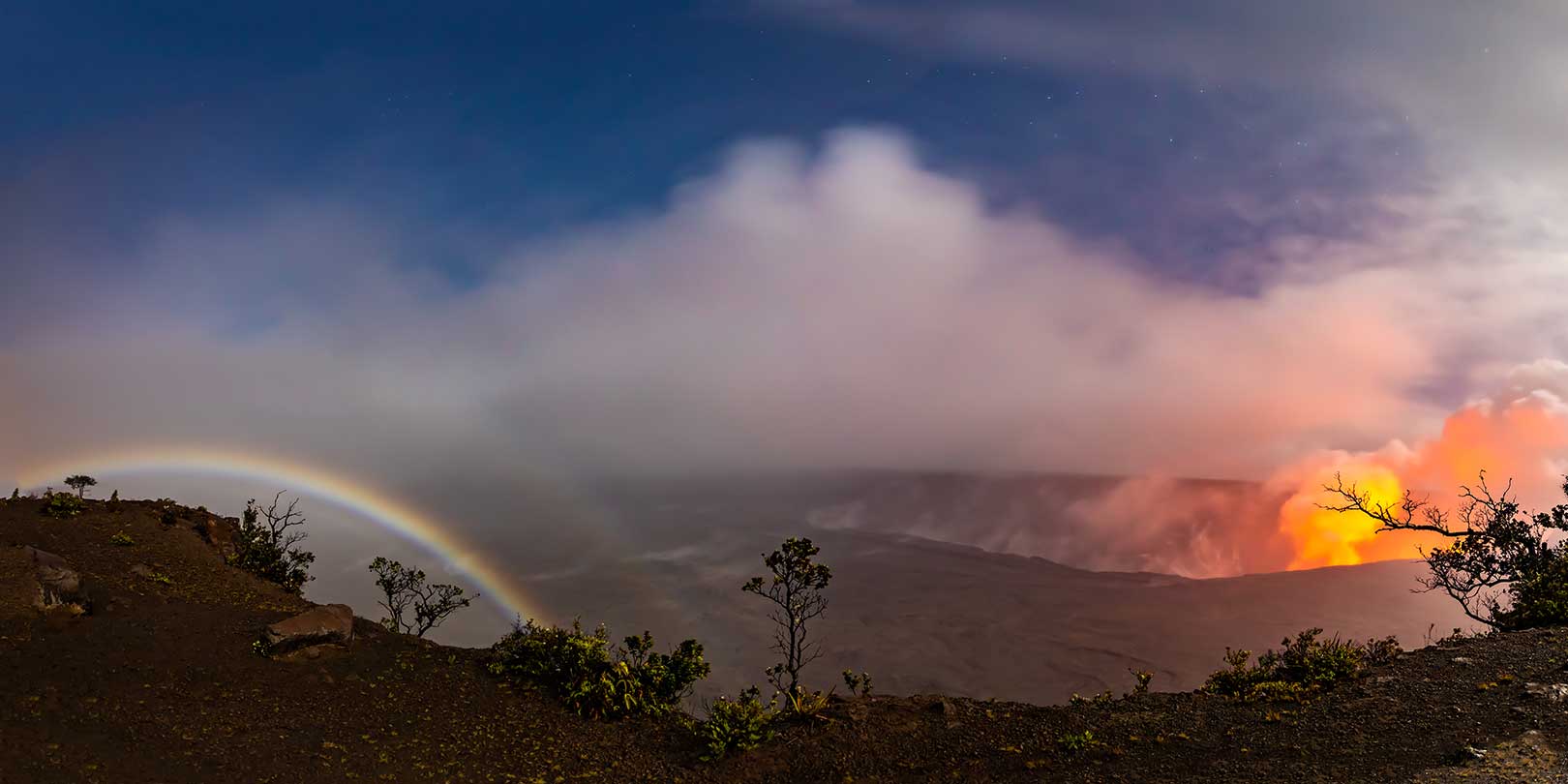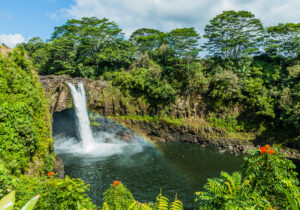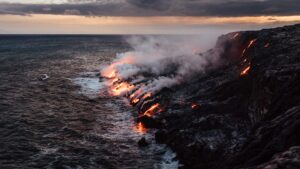Megan Shute for Only In Your State on the different climates in Hawaiʻi. Join us on a wonderful luxury tour to explore the best of the Big Island.
The climate zones in Hawaiʻi are a unique and interesting thing! Did you know that you could visit 10 out of the world’s 14 climate zones without leaving the Hawaiʻian Islands? According to the Koppen Climate Classification System, the most commonly used method for identifying and defining global climate zones, Hawaiʻi is home to a majority of the world’s major climate zones. And even more impressive – you will find 10 of the 14 total climate zones on just one island: Hawaiʻi Island.
That so many of the world’s climate zones can be found on a small and isolated island chain such as Hawaiʻi – and all of them on a single land mass with a mere 4,028 square miles – is intriguing to say the least.
This revelation came in a 1978 report that celebrated the 20th anniversary of Mauna Loa Observatory, and while the research has not since been duplicated, it is still a pretty fun trivia fact. The 10 climate zones of Hawaiʻi Island are listed below, as well as the area in which these zones can be found.
1. Tropical Continuous Wet
Characterized by high annual rainfall, monthly temperatures above 64.4°F, and no distinct dry season is the tropical continuous wet climate zone, which can be found in Oahu’s Manoa Falls Trail, and Maui’s Hana Coast. On the Big Island, you will find this climate zone in including Waipio Valley, Kalapana and Puna Coasts, Akaka Falls and Hilo, many of which receive more than 300 inches of rainfall annually. You may be wondering
2. Tropical Winter-Dry
The Tropical Winter-Dry climate is defined by heavy summer rainfall, as well as cool morning and afternoon rainfall due to higher land-surface temperatures strengthened by sea breezes – perfect for coffee growers! This climate can be found on Hawaiʻi Island in the Holualoa Coffee Belt, where 100 percent of pure Kona coffee is grown, Hawaiʻi’s last true fishing village Milolii, and Kealakekua Bay, home to the Captain Cook Monument and some killer snorkeling.
3. Tropical Summer-Dry
With peak rainfall during the winter months, Hawaiʻi is one of the only places in the world to find this unique climate zone. On Hawaiʻi Island, you will find the Tropical Summer-Dry climate at Ka Lae, the southernmost point in the United States, Punalu-u Black Sand Beach, and the Chain of Craters Road within Hawaiʻi Volcanoes National Park, as well as Molokai’s Kalaupapa Peninsula and Peahi and Hookipa beaches on Maui.
4. Tropical Monsoon
This rare climate zone is only found in Hawaiʻi in a 10-mile slice of elevated coastal land in the Hamakua Coastal town of Paauilo, an area marked by towering forests of non-native eucalyptus trees. The climate is characterized by high annual rainfall, much of which occurs during the summer months.
5. Hot Semi-Desert
Some of Hawaiʻi’s best beaches are found in Hot Semi-Desert climates, including Waikiki, Kaanapali and Poipu – with low annual rainfall and temperatures consistently higher than 64.4°F. On the Big Island, the climate is found on the South Kohala coastline, including Kailua-Kona, Kaloko-Honokohau National Historical Park, and Kekaha Kai State Park and Bays.
6. Hot Desert
The warmest climate zone in Hawaiʻi – defined by annual rainfall of less than 10 inches as well as hot temperatures averaging 83°F. Thanks to cool ocean breezes, the Big Island’s Hapuna Beach Park, Kaunoa Beach, and Puako Petroglyph Archaeological Preserve are much easier to tolerate that similar climates around the world.
7. Continuously Wet Warm Temperate
With ample annual rainfall and a four-month period of temperates averaging between 50°F and 71.6°F, these climate zones are distinctly much cooler than the rest of Hawaiʻi. You will find this climate in Kauai’s Koke’e State Park, Maui’s Kaupo Gulch, and various areas of the Big Island, including Waimea, the summit area craters and rainforests of Hawaiʻi Volcanoes National Park, Kalopa State Recreation Area, and the Hakalau Forest National Wildlife Refuge.
8. Summer-Dry Warm Temperate
With less rainfall and higher temperatures than continuously wet warm temperate, this zone is characterized by the winter months yielding approximately 70 percent of an area’s annual rainfall. You will find this climate zone on Lanai’s Munro Trail, Maui’s Makawao Forest Reserve and the camping area at the base of the Mauna Kea and Mauna Loa natural saddle.
9. Summer-Dry Cool Temperate
This climate is characterized by cooler temperatures – we’re talking four months of temperatures below 50°F – and can be found at the Mauna Kea Visitor Information Station, as well as the Mauna Kea Silversword Garden and Maui’s Haleakala Highway. While snowfall in this area occurs occasionally, this zone is more prone to morning and evening frost.
10. Periglacial Climate
Classified by warmest average month temperatures ranging from 32 and 50°F, you will only find this climate zone at the 13,796-foot summit of Mauna Kea. With evening temperatures below freezing, winter snowfall and a tree-less tundra-like landscape, the summit areas of Mauna Kea – and arguably Mauna Loa – will have you feeling as though you’ve been transported off the islands.
Aren’t we lucky to call such an absolutely fascinating – and environmentally diverse – place home?





